Saudi Arabia - Al Balad - Jeddah
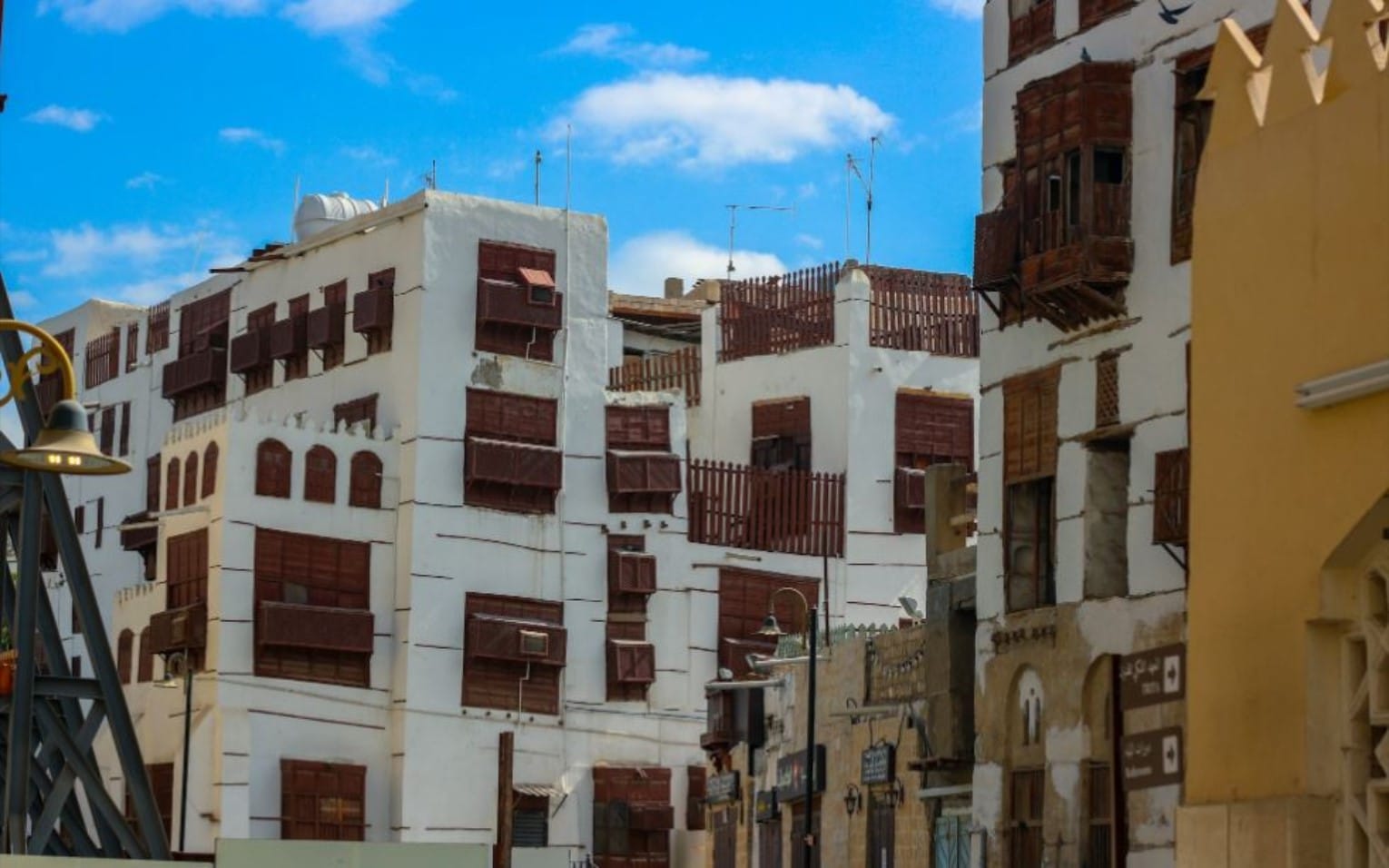
Al Balad is the historic old town of Jeddah, located along the Red Sea and founded in the 7th century; filled with beautiful coral stone buildings, many over 500 years old, adorned with rashawshin (intricately carved timber) balconies.
A UNESCO heritage site, it’s said the Crown Prince has pledged $13.33 million to restore many of the buildings part of Saudi Arabia's Vision 2030 - which aims to create a vibrant society that serves as the foundation for a thriving economy and an ambitious nation.1
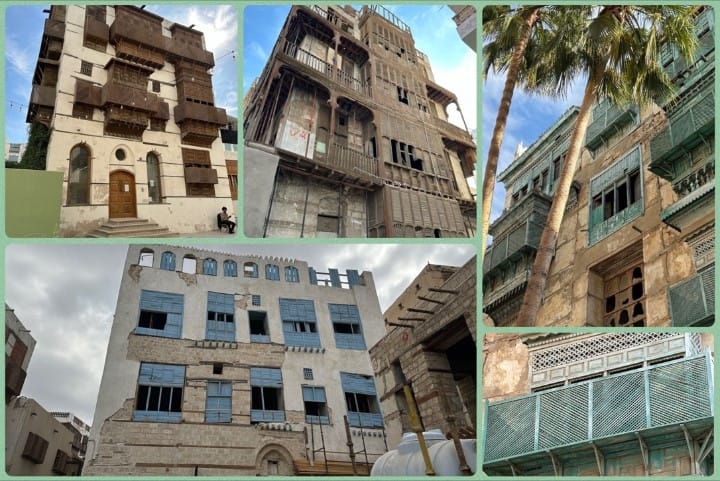
We wandered around during the quiet afternoon, admiring the many intricate facades and returned in the evening, shutters flung wide, shops open and cafes doing a brisk trade - streets filled with locals - only a handful of westerners.
Saudis are very hospitable and we had our first taste of this as the locals are friendly, especially the women - clad in their black hijabs, eager to strike up a conversation.
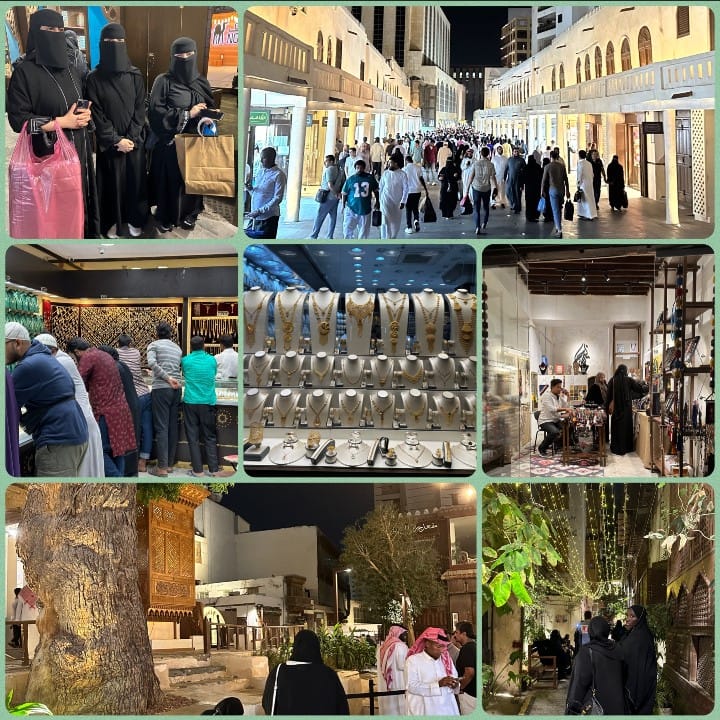
By chance the Beit Nasseef House was open - a beautiful 106 room coral stone mansion built in 1881 for wealthy merchant Omar Nasseef Efendi, and in 1925 the home of Abdul Aziz ibn Saud, who would become the first King - apparently camels mounted the wide internal staircase - what a sight that would have been!
Now it’s a school of traditional arts - we met Samaher, one of the teachers, passionate about the achievements of her students, which are mainly women, learning the techniques to recreate the designs of the intricate timber windows, (no nails or glue used) and glass panels using traditional methods and pigments.
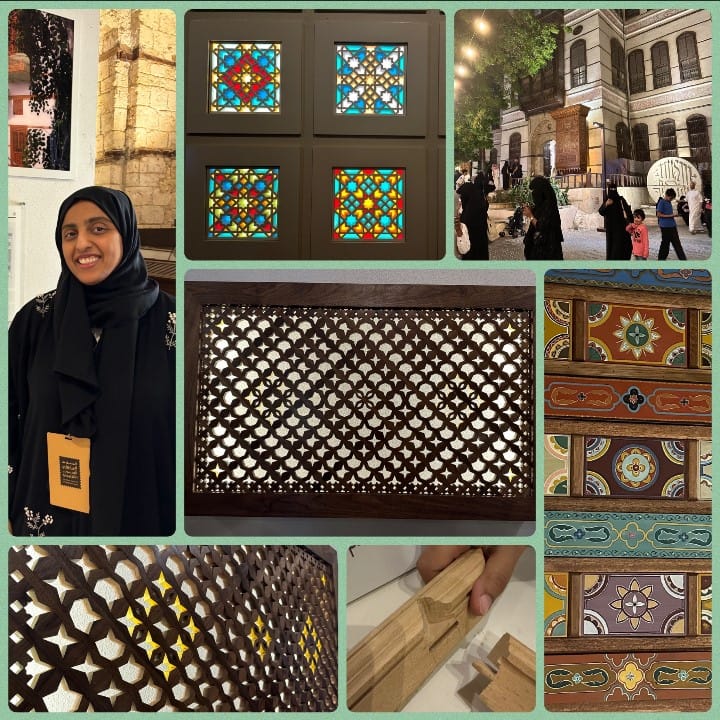
There is so much to see we were happy to visit Al Balad a 3rd time with our guide, Aziz, the following day.
More facades and houses, a souq which follows the route to Mecca gate and through to that holy city, used by pilgrims for bygone generations arriving by sea, continuing by camel, on horseback or even walking. These days a fast train leaves directly from Jeddah airport.
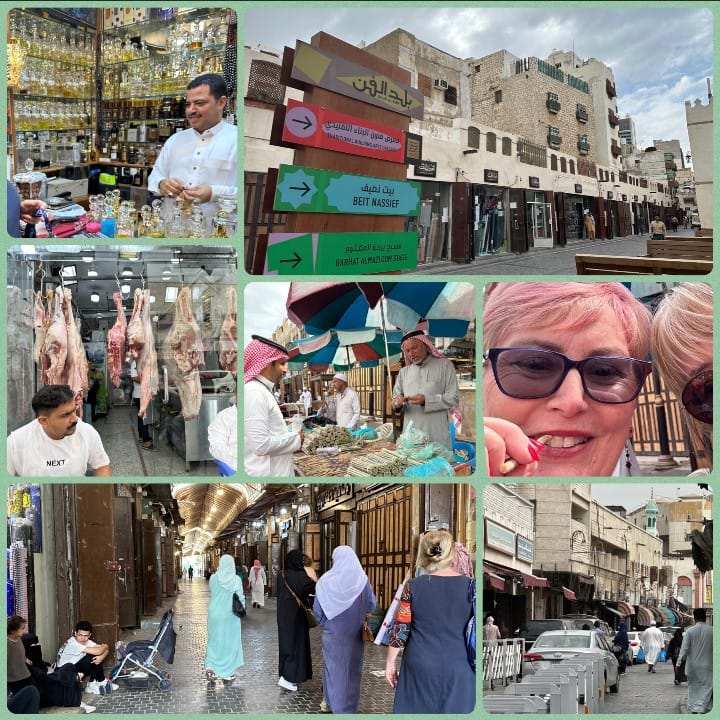
Our Saudi guide and driver Aziz told us he is one of 33 siblings, his father has 4 wives, the maximum allowed. Each wife resides on one level of the home - they cook turnabout and socialise together very much like we do with our friends.
The men are usually with other males. Parents determine marriage partners, while subsequent wives are often chosen by the first wife - I’m sure she’s usually a good friend. The father must pay for all aspects of the wedding, a costly occasion - often with more than 1000 guests.
Aziz was an excellent guide taking us through the Al-Taybat Museum - just a selection of the 300 or so rooms, covering every aspect of Saudi culture.
Abdulraouf Hassan Khalil founded the museum 40 years ago, a passionate collector of Saudi heritage, art, science, architecture which is to be kept as it is for future generations to enjoy.
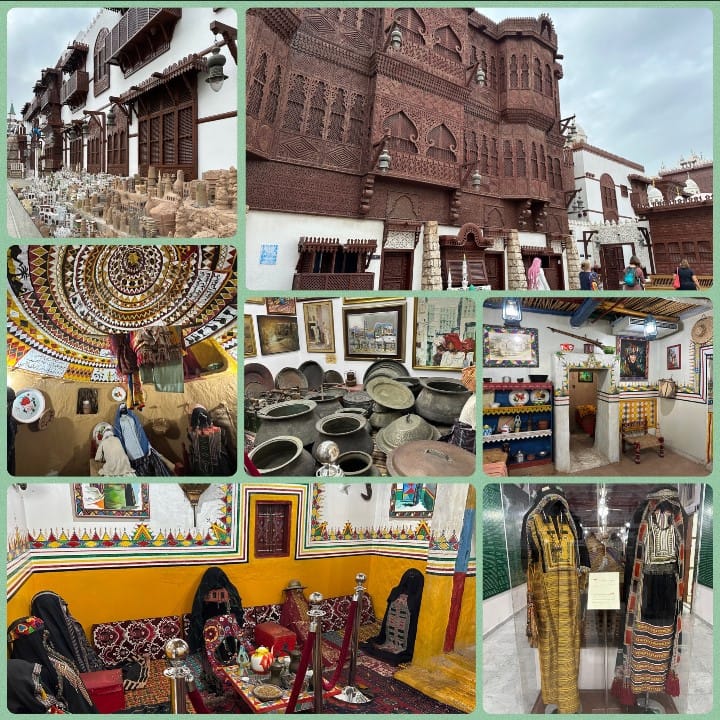
We loved our time in Jeddah and especially the old town of Al Balad. Even after 3 visits there is still so much more to see.
However it was time to move on and in a few days I will introduce you to our quick stopover at the religious city of Medina.
Credits:
1. vision2030.gov.sa
